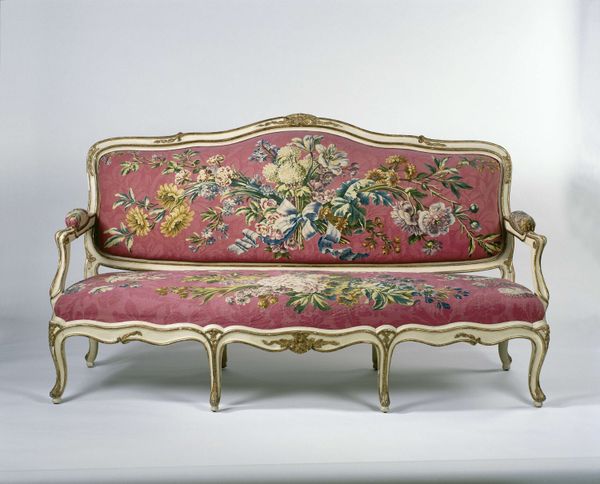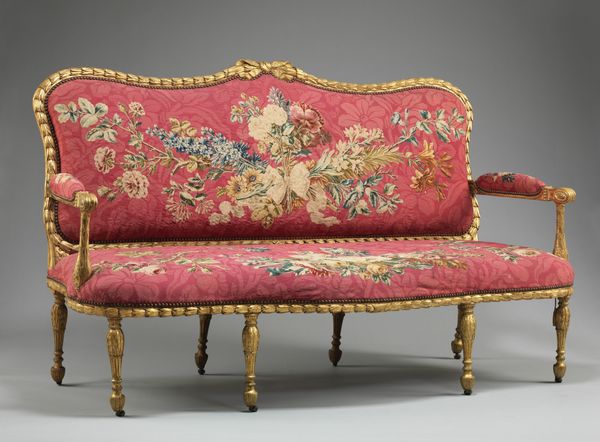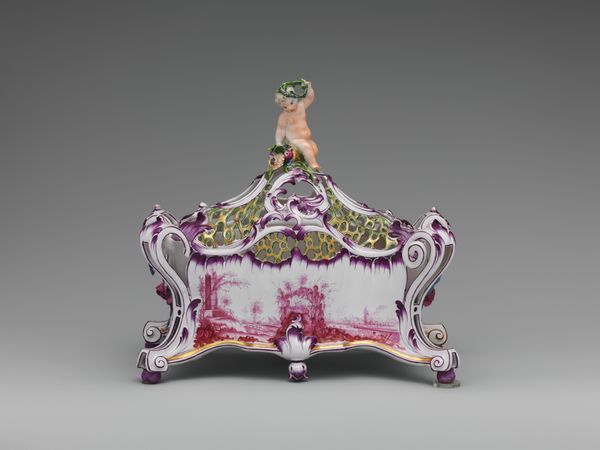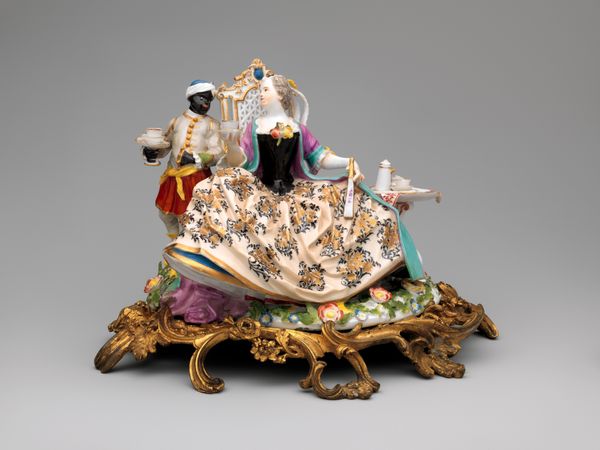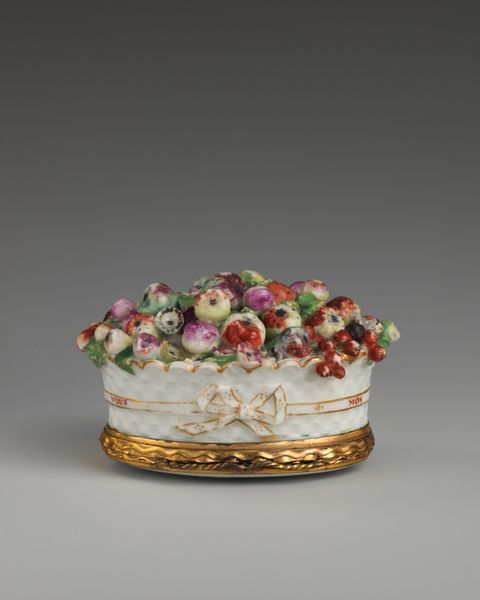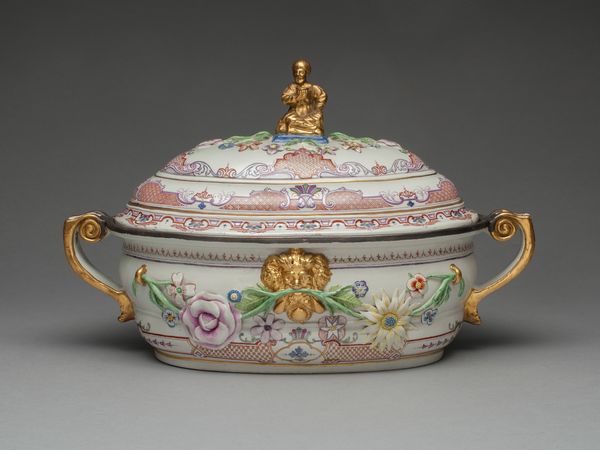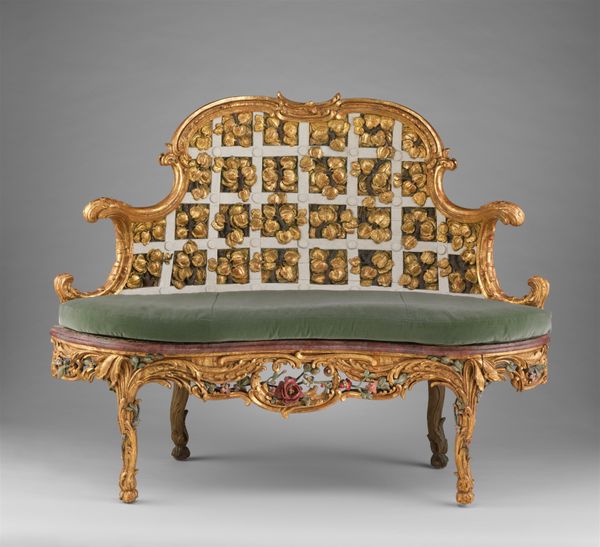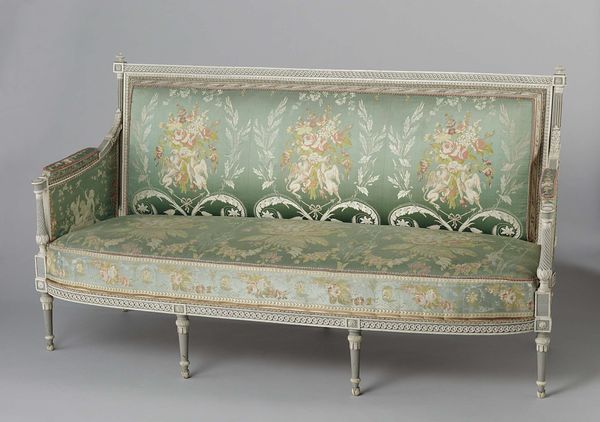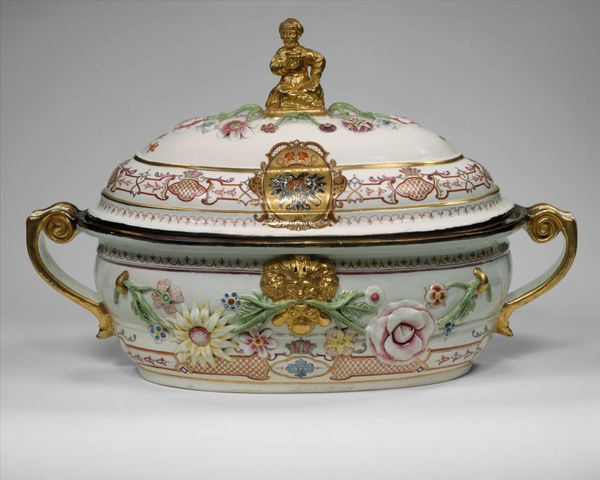
Dimensions: Overall (with stand): 6 1/8 × 11 × 6 in. (15.6 × 27.9 × 15.2 cm)
Copyright: Public Domain
Editor: Here we have the "Jardinière and stand" made of porcelain between 1829 and 1853. All those ornate details are mesmerizing; it's incredibly lavish. What can you tell me about this piece? Curator: This jardinière and stand represent more than just Rococo revival aesthetics; they reflect the complicated socio-political narratives of 19th-century Europe. How do you think the choice of porcelain and such decorative elements relates to power and privilege? Editor: Well, porcelain itself was a luxury good, right? And the gold trim screams wealth. Were these meant for personal enjoyment or to impress others? Curator: Exactly. These objects embody a yearning for the past, particularly a reimagined, idealized Rococo. However, it is important to consider how such revivalism may also embody exclusion through luxury. What kind of statement does the ownership of this piece make about one’s status and connection to the past? Editor: It feels like they’re saying, "We have the resources and refinement to appreciate this style, to hold onto this history." Is that too cynical? Curator: Not at all. It’s crucial to look beyond the beauty and ask: who had access to such beauty, and whose labor produced it? And even, who does this aesthetic exclude through its exclusivity? Editor: I never thought about a flower pot having that much to say. This piece isn't just beautiful, it's a symbol of complex social hierarchies. Curator: Precisely! Examining these objects allows us to unravel the intricate relationship between art, power, and identity during this period and even now.
Comments
No comments
Be the first to comment and join the conversation on the ultimate creative platform.


